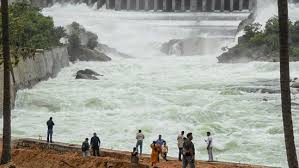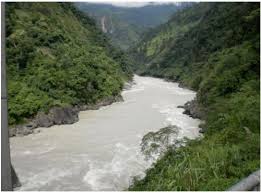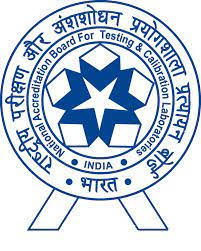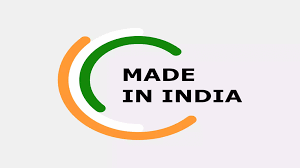Today’s Current Affairs: 21st August 2025 for UPSC IAS exams, State PSC exams, SSC CGL, State SSC, RRB, Railways, Banking Exam & IBPS, etc
Table of Contents
INS Aridhaman:

India is poised to significantly enhance its strategic defence capabilities with the upcoming induction of its third nuclear-powered Ballistic Missile Submarine (SSBN), INS Aridhaman.
- INS Aridhaman is the second Arihant-class submarine.
- It is the second nuclear-powered ballistic missile submarine (SSBN) being built by India.
- It is being built under the Advanced Technology Vessel (ATV) project to build nuclear submarines at the Ship Building Centre in Visakhapatnam
- It will have a length of 112 m (367 ft) overall, a beam of 15 m (49 ft), and a draft of 10 m (33 ft).
- The complement is about 95, including officers and sailors.
- With a displacement of 7,000 tonnes and a length of 125 metres, it has the capacity to carry a larger number of K-4 missiles.
- Aridhaman will be fitted with a combination of two sonar systems – USHUS and Panchendriya.
- USHUS is a state-of-the-art sonar meant for Kilo-class submarines.
- Panchendriya is a unified submarine sonar and tactical control system, which includes all types of sonar (passive, surveillance, ranging, intercept and active).
- It also features an underwater communications system.
- The hull features twin flank-array sonars and Rafael broadband expendable anti-torpedo countermeasures.
Krishna River : Flood Like Situation

A flood-like situation prevails across the Krishna River basin as incessant rainfall continues in the region.
- Krishna River is a river of south-central India.
- One of India’s longest rivers, it has a total course of about 800 miles (1,290 km).
- The river rises in western Maharashtra state in the Western Ghats range near the town of Mahabaleshwar, not far from the coast of the Arabian Sea.
- It passes through the Indian states of Maharashtra, Karnataka, Telangana, and Andhra Pradesh and meets the Bay of Bengal at Hamasaladeevi in Andhra Pradesh, on the east coast.
- The Krishna River Basin extends over an area of about 258,948 sq. km, which is nearly 8 percent of the total geographical area of the country.
- It is bounded by the Balaghat range on the north, by the Eastern Ghats on the south and the east, and by the Western Ghats on the west.
- The principal tributaries joining Krishna are the Ghataprabha, the Malaprabha, the Bhima, the Tungabhadra, and the Musi.
Kalai-II Hydroelectric Project:

The Arunachal Pradesh State Pollution Control Board (APSPCB) recently conducted a public hearing for environmental clearance for the proposed 1,200 MW Kalai-II hydroelectric project in Anjaw district, being developed by THDC India Limited.
- Kalai-II Hydroelectric Project is a 1,200 MW hydropower project planned on the Lohit River (a tributary of the Brahmaputra River) in the Anjaw District of Arunachal Pradesh.
- The project is being developed and currently owned by THDC India Limited (formerly Tehri Hydro Development Corporation Limited).
- It is a run-of-river with pondage project.
- The project involves construction of a concrete gravity dam, upstream & downstream coffer dam, diversion tunnel, intake tunnel, pressure Shafts, underground Powerhouse complex, surge chamber, and Tail Race Tunnel, etc.
- The hydro reservoir capacity is planned to be 318.8 million cubic meters.
- The gross head of the project will be 125 m.
- It consists of 6 turbines, each with 190 MW nameplate capacity.
Didayi Tribe:

Champa Raspeda, a student from Odisha’s Malkangiri district, has made history by becoming the first member of the Didayi, a Particularly Vulnerable Tribal Group (PVTG), to clear NEET 2025.
- The Didayi tribe, also known as the Didai people or Didiya tribe, is an indigenous tribal community residing in the Malkanagiri district of Odisha.
- They are one of 13 Particularly Vulnerable Tribal Groups (PVTG) in Odisha.
- They belong to the Proto-Australoid racial stock.
- They speak a language which has been included under the Austroasiatic language family.
- The Didayi’s social structure is patriarchal, and their religious beliefs are rooted in animism, with a deep reverence for the natural world.
- They live in small, remote forest villages, often in the Eastern Ghats hills.
- Villages have a traditional council of elders that settles disputes.
- Houses are typically thatched huts built with mud walls and bamboo.
- The primary occupation of the Didayi tribe traditionally revolves around agriculture, hunting, gathering, and fishing.
GIAHS Programme:

The Minister of State for Agriculture and Farmers Welfare informed the Lok Sabha that India currently hosts three Globally Important Agricultural Heritage Systems (GIAHS).
- The Globally Important Agricultural Heritage Systems (GIAHS) is a Food and Agriculture Organization’s programme launched at the World Summit for Sustainable Development in 2002.
- It was launched in response to global threats to family farming and traditional agricultural systems, such as climate change, community displacements and biodiversity loss.
- It is aiming to strike a balance between conservation, sustainable adaptation and socioeconomic development, the programme helps to mitigate the threats faced by farmers while enhancing the benefits of farming systems.
- It uses a multistakeholder approach, GIAHS provides
- Technical assistance promotes the value of traditional agricultural knowledge and stimulates markets for agricultural products, agrotourism and other market opportunities.
India’s GIAHS:
- Koraput region (Odisha): It is renowned for its subsistence paddy cultivation, predominantly on highland slopes, and is home to a vast diversity of paddy landraces and farmer-developed varieties. It also harbors rich genetic resources of medicinal plants, deeply interwoven with the indigenous tribal communities and their traditional knowledge systems.
- Kuttanad system (Kerala): It is a unique below-sea-level farming landscape, comprising wetlands for paddy cultivation and fish catching, garden lands for coconut and food crops, and inland water bodies for fishing and shell collection.
- Saffron Park of Kashmir: It represents a rich agro-pastoral system characterized by traditional saffron cultivation, intercropping, and the use of organic farming practices, all of which contribute to maintaining local biodiversity and soil health.
Quality Council of India : New Medical Application Portal

The National Accreditation Board for Testing and Calibration Laboratories (NABL), a constituent board of the Quality Council of India launched its new Medical Application Portal.
- Quality Council of India is a non-profit autonomous organisation registered under Societies Registration Act XXI of 1860.
- It was set up in 1997 jointly by the Government of India and the Indian Industry represented by the three premier industry associations, i.e., Associated Chambers of Commerce and Industry of India (ASSOCHAM), Confederation of Indian Industry (CII), and Federation of Indian Chambers of Commerce and Industry (FICCI).
- It is under the administrative control of the Department for Promotion of Industry and Internal Trade (DPIIT), Ministry of Commerce and Industry.
- Functions of Quality Council of India:
- It works as the national accreditation body.
- It has been established to create a mechanism for independent third-party assessment of products, services, and processes.
- It also promotes the adoption of quality standards relating to Quality Management Systems, Food Safety Management Systems and Product Certification and Inspection Bodies through the accreditation services provided by the National Accreditation Board for Certification Bodies (NABCB).
- It plays a pivotal role at the national level in propagating, adoption, and adherence to quality standards in all important spheres of activities.
- Governance of Quality Council of India:
- QCI functions through the governing body and other executive bodies (boards/committees) for implementing the strategy, policy, and operational guidelines as set out by its governing council.
- The council comprises 38 members, with equal representation from the Government, Industries and other stakeholders.
Agni-5 Missile:

India successfully test-fired its Intermediate-Range Ballistic Missile Agni-5 from the Integrated Test Range at Chandipur, Odisha.
- Agni-5 Missile is a nuclear-capable land-based Intercontinental Ballistic Missile (ICBM) with Multiple Independently Targetable Reentry Vehicle (MIRV) capability.
- It is developed by the Defence Research and Development Organisation (DRDO).
- It is one of India’s most advanced long-range missiles, capable of striking targets well beyond 5,000 kilometers
- It is designed with modern navigation, guidance, warhead, and engine technologies and strengthens India’s strategic deterrence capability.
- It is capable of carrying and firing up to three nuclear warheads simultaneously.
- Ballistic Missile is a rocket-propelled, self-guided strategic-weapons system that follows a ballistic trajectory to deliver a payload from its launch site to a predetermined target.
- They are powered initially by a rocket or series of rockets in stages, but then follow an unpowered trajectory that arches upwards before descending to reach its intended target.
- They can carry conventional high explosives as well as chemical, biological, or nuclear munitions.
- They can be launched from aircraft, ships, and submarines, in addition to land-based silos and mobile platforms.
Made in India Label Scheme:

The Made in India Label Scheme promotes domestic manufacturing and informs consumers about product origin.
- Made in India Label Scheme is an initiative that lends support to the manufacturing industry by building a brand reputation, stronger identity and wider reach for made in India products.
- Aim is to strengthen the reputation of the products manufactured in India. It also guarantees authenticity of the products originating from India and/or crafted with locally sourced raw materials.
- This is a voluntary certification scheme to help manufacturers demonstrate that their products are manufactured in India and are of good quality.
- The label displays a QR code and a logo with the information around location of manufacturing, validity of the label and other product specific information.
- The initiative is being led by the Department for Promotion of Industry and Internal Trade (DPIIT).
- The Quality Council of India and the India Brand Equity Foundation are actively collaborating with DPIIT in an advisory capacity.
- Objectives of the Made in India Label Scheme:
- The scheme provides identity to the product based on its origin
- It develops a mechanism to qualify and brand the products of Indian origin
- It also supports in recognising the products of Indian origin in domestic as well as international market
- The Made in India Label strength the positioning of the product in the competitive market, as the label would indicate authenticity, quality and differentiation among other products.
- Eligibility Criteria : Manufacturers and producers who manufacture or assemble their products wholly or substantially in India.
- Each product has a specific quality and manufacturing criteria set by relevant regulatory bodies which needs to be met before obtaining the permission.
UIDAI onboards Starlink for Aadhaar-based e-KYC:
The Unique Identification Authority of India (UIDAI) has onboarded Starlink Satellite Communication Pvt Ltd to use Aadhaar authentication for customer verification. The announcement, made on August 20, 2025, marks a significant synergy between India’s trusted digital identity system and cutting-edge satellite internet technology. Starlink, a satellite-based global internet provider, will now use Aadhaar-based e-KYC and authentication for onboarding Indian users. The process will be voluntary and in line with existing KYC rules and data protection norms. This will enable faster, paperless, and compliant onboarding of customers in remote and rural areas.
Centre approves renaming of Uttar Pradesh’s Jalalabad to Parashurampuri:
The Union Ministry of Home Affairs has officially approved the renaming of Jalalabad town in Shahjahanpur district, Uttar Pradesh, to Parashurampuri. The announcement was made on August 20, 2025, by Union Minister Jitin Prasada, who hails from the region. The change was long demanded by local residents and supported by political and religious leaders who associate the town with the mythological birthplace of Lord Parashuram.The town is considered by many to be the mythological birthplace of Lord Parashuram, a revered figure in Sanatan Dharma. The name change aims to reflect the spiritual and cultural identity of the region, replacing what is perceived as a symbol of historical slavery or “ghulami”.
Online Gaming Bill 2025 Passed:
Lok Sabha passed the Promotion and Regulation of Online Gaming Bill, 2025, marking a transformative moment for India’s digital entertainment landscape. The Bill aims to promote e-sports and online social games, while prohibiting harmful online money gaming platforms that have been linked to addiction, financial ruin, and even suicides. This legislation establishes a central regulatory framework to guide the development of the sector while protecting vulnerable users, particularly the youth.
India’s Core Sector Grows 2% in July 2025:
India’s eight core industries registered a 2% year-on-year growth in July 2025, according to the latest data released by the Ministry of Commerce and Industry. This modest rise in industrial output reflects a mixed performance, with robust expansion in steel, cement, fertilisers, and electricity, partially offset by a significant decline in coal production and a dip in petroleum-related outputs.
NCERT launches new modules on Operation Sindoor for school students:
National Council of Educational Research and Training (NCERT) unveiled new curriculum modules on Operation Sindoor, calling it a “saga of courage” and a transformative moment in India’s military and political response to terrorism. The modules are designed for Classes 3 to 12, narrating the events leading to and following the May 2025 precision strikes on terror camps in Pakistan and Pakistan-occupied Jammu and Kashmir (PoJK).Operation Sindoor was launched in retaliation to the April 22, 2025, Pahalgam terror attack, where 26 civilians, including a Nepali national, were killed by terrorists from The Resistance Front (TRF). The attack drew widespread national grief and calls for decisive action. Prime Minister Narendra Modi, cutting short his Saudi Arabia trip, returned to lead the response.




